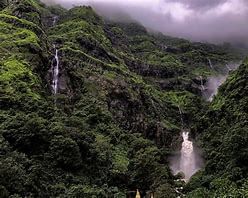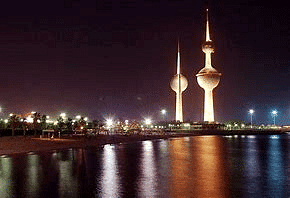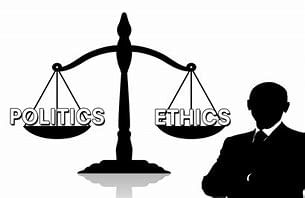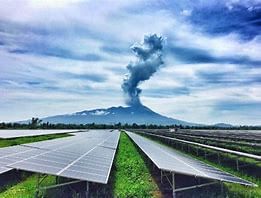UPSC Daily Current Affairs- 14th June 2024 | Current Affairs & Hindu Analysis: Daily, Weekly & Monthly PDF Download
GS-III/Environment and Ecology
NITROUS OXIDE EMISSIONS UP 40 % IN 40 YEARS
Source: Indian Express

Why in News?
Emissions of planet-warming nitrous oxide gas rose by 40 per cent between 1980 and 2020, a study by the Global Carbon Project revealed recently.
Background:-
- China (16.7 per cent), India (10.9 per cent), US (5.7 per cent), Brazil (5.3 per cent) and Russia (4.6 per cent) were the top five emitters of the gas more potent than carbon dioxide and methane.
About NITROUS OXIDE
Chemical Properties:
- Nitrous oxide (N₂O), also known as laughing gas, is a colorless, non-flammable gas with a slightly sweet smell and taste at room temperature.
- It acts as a strong oxidizer at high temperatures, similar to oxygen.
Medical and Recreational Use:
- Used in surgery and dentistry for its anesthetic and pain-relief properties.
- Called "laughing gas" due to its euphoric effects, which also make it popular for recreational use.
- Chronic use can cause neurological damage by inactivating vitamin B12.
Industrial Applications:
- Used as an oxidizer in rocket propellants.
- Used in motor racing to boost engine power.
Environmental Impact:
- Major scavenger of stratospheric ozone, with effects similar to CFCs.
- Third most significant greenhouse gas, contributing notably to global warming.
- Reducing emissions is crucial in climate change mitigation.
Sources of Emissions:
- Human activities, particularly agriculture and livestock rearing, are key sources.
- Agriculture, through nitrogen fertilizers and animal manure, accounted for 74% of anthropogenic N₂O emissions in the last decade.
- Natural sources like oceans, inland waters, and soil contributed 11.8% of global emissions (2010-2019).
- Combined emissions from agricultural activities, waste, biomass burning, fossil fuels, and industries contributed around 6% globally (2010-2019).
Historical Emission Data:
- Commercial nitrogen fertilizer use increased from 60 million metric tonnes in 1980 to 107 million metric tonnes in 2020.
- Europe, Russia, Australasia, and Japan and Korea saw decreasing emissions, with Europe showing the largest decrease from 1980 to 2020.
- China and South Asia saw the largest increases in emissions from 1980 to 2020, rising by 92%.
Global Impact and Solutions:
- High atmospheric N₂O levels can deplete the ozone layer and exacerbate climate change.
- Excess nitrogen leads to soil, water, and air pollution.
- Limiting global temperature rise to 2°C, as per the Paris Agreement, necessitates a reduction in human-driven N₂O emissions.
- Currently, no technology exists to remove N₂O from the atmosphere, making emission reduction the only viable solution.
GS-I/History
RAM PRASAD BISMIL
Source: PIB

Why in News?
11th June marked the birth anniversary of freedom fighter Ram Prasad Bismil.
Background:
- His ideals of freedom struggle stood in contrast to that of Mahatma Gandhi and he would reportedly say “independence would not be achieved by means of non-violence”.
About RAM PRASAD BISMIL
Ram Prasad Bismil:
- Born: June 11, 1897, in Shahjahanpur district (Uttar Pradesh, India)
- Died: December 19, 1927
- Roles: Indian poet, writer, revolutionary against British Raj
- Pen names: Ram, Agyat, Bismil
Early Life:
- Family: Brahmin
- Education: Learned Hindi from his father, Urdu from a moulvi
- Schooling: Attended English-language school despite father's disapproval
- Influences: Joined Arya Samaj, showed early talent in patriotic poetry
Revolutionary Activities:
- Inspiration: At 18, angered by the death sentence of Bhai Parmanand, composed the poem "Mera Janm" (My Birth)
- Associations: Arya Samaj, founding member of Hindustan Republican Association (HRA)
Conspiracies and Key Events:
Mainpuri Conspiracy (1918):
- Collaborated with Genda Lal Dixit to organize youth from Etahwah, Mainpuri, Agra, and Shahjahanpur
- Organizations: Matrivedi and Shivaji Samiti
- Actions: Published and distributed "Deshwasiyon ke Naam" pamphlet and "Mainpuri ki Pratigya" poem, looted government coffers for funds
Kakori Conspiracy (1925):
- Aim: Fund revolutionary activities
- Date: August 9, 1925
- Key Figures: Ram Prasad Bismil, Ashfaqulla Khan, Sachindra Bakshi, Rajendra Lahiri
- Event: Stopped the 8-Down Saharanpur Lucknow passenger train at Kakori, looted cash intended for the treasury
- Aftermath: Colonial authorities arrested more than a dozen HRA members within a month
- Outcome: Bismil, Khan, Bakshi, and Lahiri were sentenced to be hanged after the trial in the Kakori conspiracy
Legacy:
- Bismil is remembered as a prominent freedom fighter and revolutionary poet who significantly contributed to India's independence movement.
GS-I/Geography
WESTERN GHATS
Source: Indian Express

Why in News?
Background:Karnataka, Maharashtra, and Goa, three of the six states traversed by the Western Ghats, have requested a reduction in the extent of the proposed eco-sensitive areas (ESAs) to allow for development works.
- These states have communicated their concerns to an expert panel appointed by the Centre, which is tasked with finalizing a draft notification on the matter.
- Also known as Sahyadri Hills in Maharashtra and Sahya Parvatham in Kerala.
- Mountain range running parallel to the western coast of the Indian peninsula.
- Not traditional mountains, but the faulted edge of the Deccan Plateau.
Geology
Rich in geological diversity:- Rocks include Basalt, charnockites, granite gneiss, khondalites, leptynite, metamorphic gneisses.
- Occurrences of crystalline limestone, iron ore, dolerites, and anorthosites.
Biodiversity
- Recognized as a UNESCO World Heritage Site.
- One of the world’s eight ‘hotspots’ of biological diversity.
- Home to 30% of India’s flora and fauna species.
Hydrology
Westward Flowing Rivers:- Periyar, Bharathappuzha, Netravati, Sharavathi, Mandovi.
- Major rivers include Godavari, Krishna, and Kaveri.
Political Geography
Encompasses six states:- Gujarat, Maharashtra, Goa, Karnataka, Tamil Nadu, Kerala.
Mountain Ranges and Peaks
- The Nilgiri ranges in Karnataka connect to the Shevaroys and Tirumala range, linking the Western Ghats to the Eastern Ghats.
- Anamudi, standing at 2,695 meters.
GS-I/Geography
KUWAIT
Source: Business Standard

Why in News?
The devastating fire in Kuwait has resulted in the loss of 49 lives, with 41 of those being Indian nationals.
Background
- The majority of Indian victims in Kuwait were from the southern states, particularly Kerala and Tamil Nadu.
About Kuwait
Location:- Situated in the northeastern corner of the Arabian Peninsula.
- Bordered by Iraq (north and northwest), Saudi Arabia (south), and the Persian Gulf (east).
- Kuwait City is the capital and largest city, acting as the political, cultural, and economic hub.
Political System
Government:- Constitutional monarchy with a parliamentary system.
- The head of state is the Emir, a hereditary monarch.
Economic Significance
Oil Reserves:- Holds the world’s sixth-largest oil reserves, nearly 10% of global reserves.
- Founding member of the Organization of the Petroleum Exporting Countries (OPEC), coordinating petroleum policies among member countries.
Historical Context
Independence:- Gained independence from British protection in 1961.
- Invaded by Iraq in 1990, leading to the Gulf War.
- Liberated by coalition forces in 1991.
India-Kuwait Relations
Diplomatic Relations:- Began in June 1962.
- Characterized by economic cooperation, cultural exchanges, and a significant Indian diaspora.
- India was one of the earliest countries to recognize Kuwaiti independence and has maintained traditionally friendly relations.
GS-IV/Ethics
ETHICS AND CRIMINALIZATION OF POLITICS
Source: SCO

Why in News?
As the largest democracy in the world, India has been grappling with a recurring and complex problem: the widespread menace of Criminalization of Politics.
Background
- The issue of criminalization in politics undermines democratic principles and hampers the development and enactment of public policy.
- The predominance of individuals with criminal backgrounds in politics has cast a long shadow over the country's progress.
Criminalization of Politics
- Definition:
- Involvement of individuals with criminal records in the political arena.
- Includes criminals running for and being elected to positions in parliament and state legislatures.
- Often results from the close relationship between politicians and criminal elements.
Ethical Challenges Related to Criminalization of Politics
Defending Accused Individuals:
- Some legislators facing serious criminal charges defend individuals accused of serious offenses, particularly against women, showing a departure from ethical norms across party lines.
- This separation often stems from intense partisanship and a prioritization of power over ethical conduct.
Failure to Address Misconduct:
- Often, misconduct within the political class is not adequately addressed, undermining accountability and ethical standards.
- Reactive responses to scandals, such as in the recent case of Prajwal Revanna, highlight the lack of proactive accountability within political parties.
Culture of Impunity:
- Norms and rules are inconsistently enforced in the political sphere, leading to a culture of impunity.
- The burden of accountability often falls on individuals, particularly women, rather than on the system.
Women's Issues and Political Empowerment
Substantive Progress:
- Despite agendas on women’s empowerment, issues such as respect, equality, and security remain unaddressed.
- Women are often mobilized as voters and beneficiaries of welfare schemes, but their collective concerns are sidelined in political agendas.
Representation vs. Empowerment:
- Equitable representation for women is not sufficient for political empowerment.
- The disconnect between representation and empowerment is evident in the limited impact of bodies like the National Women’s Commission.
GS-II/International Relations
China’s ‘grey-zone’ warfare tactics against Taiwan | Explained
Source: Indian Express

Why in News?
Since President Lai Ching-te took office in Taiwan, China has reacted strongly to his pro-independence remarks by using sophisticated tactics against his Democratic Progressive Party.
Coercive Measures China Has Imposed on Taiwan
Military Pressure
- PLA Drills: The People’s Liberation Army Eastern Theater Command (PLA ETC) conducts regular training drills and simulated invasion scenarios.
- Psychological Warfare: Uses 3D animation videos depicting missile attacks on Taiwan to intimidate and exert psychological pressure.
Grey-Zone Warfare
- PLA Sorties: Continuous sorties by PLA fighter jets, UAVs, and strategic fighters over and around Taiwan aim to wear down Taiwan’s defense forces.
- Intelligence Operations: These operations also gather intelligence and exert sustained pressure on Taiwan's defenses.
Economic Coercion
- Suspended Preferential Tax Rates: China suspended preferential tax rates for 134 chemical imports from Taiwan, previously granted under the Economic Cooperation Framework Agreement (ECFA).
- Retaliatory Measures: This action was in response to pro-independence statements by Taiwan’s new president, Lai Ching-te, and Taipei’s restrictions on over 2,000 Chinese imports.
China's Ideology and Political Tactics
Cognitive Warfare
- Ideological Narratives: China deploys narratives within Taiwan to influence public opinion, such as dropping fliers via drones on Kinmen Island promoting anti-independence messages.
- Public Influence: These tactics aim to initiate public discussions and support for Beijing’s stance against Taiwan's independence.
Propaganda
- Social Media Campaigns: Utilizes social media to propagate Beijing’s ideological stance, promoting narratives that align with Chinese interests.
Carrots and Sticks Approach (Political Tactics)
Carrots
- Favorable Treatment to KMT: China extends favorable treatment to Taiwan’s opposition party, the Kuomintang (KMT), which holds relatively pro-mainland views.
- Engagement with CPC: The KMT maintains communication and collaboration with Communist Party of China (CPC) officials, leading to interactions that the Democratic Progressive Party (DPP) lacks.
- Investigations: KMT’s interactions with CPC officials have sometimes led to investigations under Taiwan’s ‘anti-infiltration law’.
Sticks
- Economic Measures Against DPP: Coercive economic measures target Taiwan’s DPP to seek political concessions.
- Chemical Imports: Suspension of preferential tax rates for Taiwanese chemical imports is an example of such coercive tactics.
Conclusion
- Strategic Resilience: Taiwan must navigate China’s multifaceted ‘grey-zone’ tactics by enhancing its defense, forming strategic alliances, and engaging in international advocacy.
- Safeguarding Sovereignty: These measures are essential to safeguard Taiwan’s sovereignty and democratic identity amid escalating pressures from China.
GS-I/Geography
‘Cold Lava’ Rivers flow in Philippines after Mount Canlaon eruption
Source: Indian Express

Why in News?
After Mount Canlaon erupted in the Philippines, cold lava started flowing through streets and rivers.
- It was followed by ashfall, and dangers like floods and mudflows downstream.
What is Cold Lava?
- Cold lava, also known as “lahar,” is a mixture of water and rock fragments that flows rapidly down the slopes of a volcano, often triggered by heavy rainfall or volcanic eruptions.
- The mixture forms a concrete-like substance that destroys everything in its path.
- This can also include smooth, glassy textures or rough and jagged textures.
Another example of cold Lava in the world
- Mount Merapi, Indonesia (2023): An eruption of Mount Merapi resulted in the deaths of at least 23 climbers and spewed ash up to 3,000 meters into the air, covering towns and villages.
About Mount Canlaon
- Mount Canlaon, located in the Philippines, is an active stratovolcano known for its frequent eruptions and volcanic activity.
- It is situated on the island of Negros in the Visayas region of the Philippines.
- It is part of the Pacific Ring of Fire, known for its high volcanic activity.
- It poses hazards such as ash fall, lava flows, pyroclastic flows, and lahars (mudflows) that can endanger nearby communities and agriculture.
GS-III/Science and Technology
Kavli Prize, 2024 Announced
Source: Indian Express

Why in News?
About Kavli PrizeThe winners of the 2024 Kavli Prize were announced, recognising achievements in astrophysics, neuroscience, and nanoscience.
- The Kavli Prize celebrates outstanding achievements in astrophysics, neuroscience, and nanoscience.
- It is established in honour of Norwegian-American businessman and philanthropist Fred Kavli (1927-2013).
- Awarded biennially, the prize recognizes researchers whose work pushes the boundaries of human knowledge and enhances our understanding of the universe, the brain, and nanoscale phenomena.
- Comparison with Nobel Prize: The Kavli Prize mirrors the Nobel Prize in its prestige and international recognition but differs by not limiting awards to achievements within the preceding year, allowing broader scope and longevity in selection criteria.
- Award Ceremony: Each Kavli Prize includes a $1 million cash award per field, a scroll, and a 7 cm diameter medal. The ceremony, held at the Oslo Concert Hall and attended by global scientific leaders, features a red-carpet event, emphasizing its significance in the scientific community.
- Selection Process:
- Committees: Three international committees nominate and review candidates, providing a unanimous recommendation to the Norwegian Academy of Science and Letters.
- Nominees: Nominees come from prestigious institutions worldwide, ensuring a diverse and comprehensive evaluation process.
| Field | Winners | Contributions |
| Astrophysics | David Charbonneau (Harvard University), Sara Seager (Massachusetts Institute of Technology) |
|
| Nanoscience | Robert Langer (MIT), Armand Paul Alivisatos (University of Chicago), Chad Mirkin (Northwestern University) |
|
| Neuroscience | Nancy Kanwisher (MIT), Winrich Freiwald (Rockefeller University), Doris Tsao (University of California, Berkeley) |
|
|
38 videos|5258 docs|1111 tests
|
FAQs on UPSC Daily Current Affairs- 14th June 2024 - Current Affairs & Hindu Analysis: Daily, Weekly & Monthly
| 1. What are nitrous oxide emissions and why have they increased by 40% in the past 40 years? |  |
| 2. How do nitrous oxide emissions contribute to climate change? |  |
| 3. What are the potential impacts of increased nitrous oxide emissions on the environment and human health? |  |
| 4. What measures can be taken to reduce nitrous oxide emissions and mitigate their impact on the environment? |  |
| 5. How can individuals contribute to reducing nitrous oxide emissions in their daily lives? |  |
















